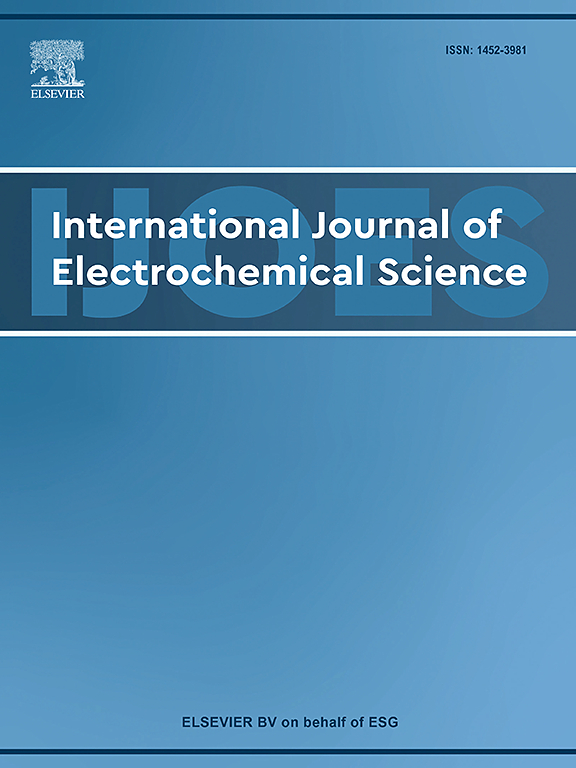Influence of arsenic on copper anode dissolution in electrorefining processes
IF 2.4
4区 化学
Q4 ELECTROCHEMISTRY
International Journal of Electrochemical Science
Pub Date : 2025-06-27
DOI:10.1016/j.ijoes.2025.101115
引用次数: 0
Abstract
Over the past four decades, the average arsenic content in copper anodes has increased. Arsenic is known as one of the anode components that can help prevent anode passivation. This study challenges the proposed mechanism of acid generation in a boundary layer of the passive layer and aims to expand the effect of arsenic both before and after the generation of the passive layer. The novel mechanism proposed in this study explains why samples with higher arsenic content have a higher dissolution rate before the passive layer forms. It also accounts for the longer time to passivation values observed in higher arsenic-containing anodes. The proposed mechanism also describes the passive layer dissolution rate as a function of arsenic content. The study investigated the impact of arsenic on the passivation mechanism of copper anodes at different arsenic concentrations using chronopotentiometry (CP) and contact angle experimental methods. The CP and ICP results confirm that the time to passivation increases and the electrolyte cupric concentration rises as the anode arsenic content increases from 500 to 1500 ppm. The higher dissolution rate of the anodes containing more arsenic was attributed to their fine, dendritic structure and higher wettability before the formation of the passive layer. Interestingly, the fastest dissolution rate after the formation of the passive layer was observed in the 1000 ppm arsenic sample. This was attributed to the counter effect of the electrolyte on surface accessibility caused by the passive layer microstructure and the wettability of the anode surface.
电精炼过程中砷对铜阳极溶解的影响
在过去的四十年中,铜阳极中的平均砷含量有所增加。砷被认为是阳极成分之一,可以帮助防止阳极钝化。本研究对已有的被动层边界层产酸机制提出了挑战,旨在扩大砷在被动层生成前后的影响。本研究提出的新机制解释了为什么砷含量较高的样品在被动层形成之前具有较高的溶解速率。这也解释了在高含砷阳极中观察到的较长时间的钝化值。提出的机理还描述了被动层溶解速率作为砷含量的函数。采用时间电位法(CP)和接触角实验方法研究了不同砷浓度下砷对铜阳极钝化机理的影响。CP和ICP结果证实,阳极砷含量从500增加到1500 ppm时,钝化时间增加,电解质铜浓度上升。砷含量较高的阳极在钝化层形成前具有良好的枝晶结构和较高的润湿性,其溶解速率较高。有趣的是,在1000 ppm的砷样品中,观察到钝化层形成后的溶解速度最快。这是由于电解液对钝化层微观结构和阳极表面润湿性造成的表面可及性的反作用。
本文章由计算机程序翻译,如有差异,请以英文原文为准。
求助全文
约1分钟内获得全文
求助全文
来源期刊
CiteScore
3.00
自引率
20.00%
发文量
714
审稿时长
2.6 months
期刊介绍:
International Journal of Electrochemical Science is a peer-reviewed, open access journal that publishes original research articles, short communications as well as review articles in all areas of electrochemistry: Scope - Theoretical and Computational Electrochemistry - Processes on Electrodes - Electroanalytical Chemistry and Sensor Science - Corrosion - Electrochemical Energy Conversion and Storage - Electrochemical Engineering - Coatings - Electrochemical Synthesis - Bioelectrochemistry - Molecular Electrochemistry

 求助内容:
求助内容: 应助结果提醒方式:
应助结果提醒方式:


